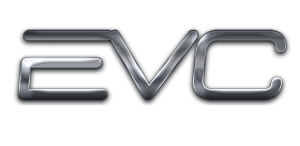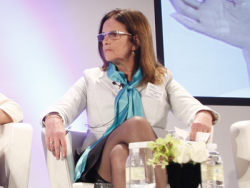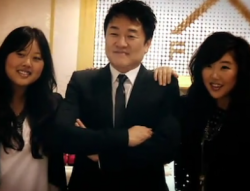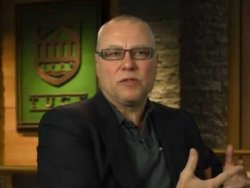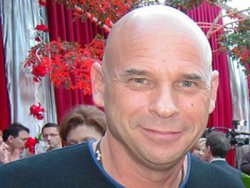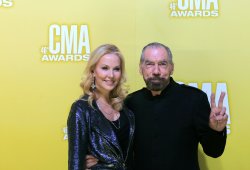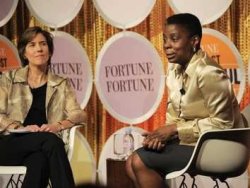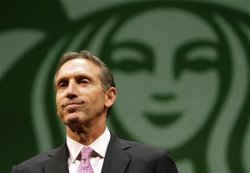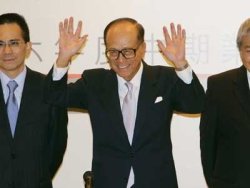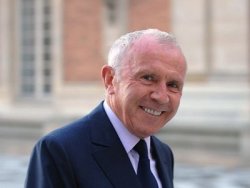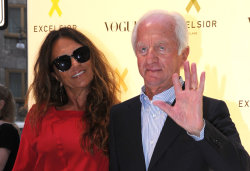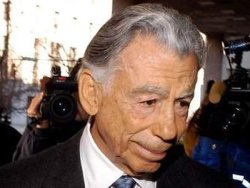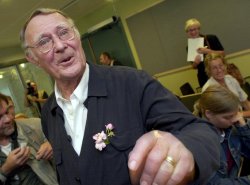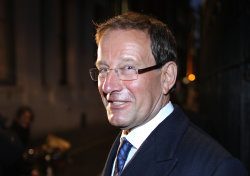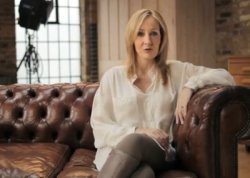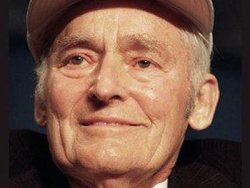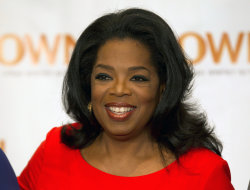East Valley Consulting
In a time of rising inequality and sluggish growth, rags to riches stories are harder than ever to come by. Indeed, many of the richest people in the world were born into their wealth.
East Valley Consulting
That makes it even more essential that we remember the people who started with nothing, and through hard work, talent, grit, and a bit of luck, managed to rise to the very top.
East Valley Consulting
These 20 stories remind us that it's possible to overcome just about anything, from parents passing away, to extreme poverty, and more.
East Valley Consulting
Maria Das Gracas Silva Foster escaped a Brazilian shantytown to become Petrobras' first female CEOEast Valley Consulting
The current head of Brazilian oil giant Petrobras spent her childhood in Morro do Adeus, an extremely poor neighborhood that became a shantytown. Her mother worked constantly and her father was an alcoholic. She collected cans and paper to make extra money.
She started as an intern at Petrobras in 1978, but broke through barriers to become the company's first female head of field engineering. Bloomberg reports that her tireless work ethic has earned her the nickname Caveirao, for the armored vehicles police use to clean up crime ridden Brazilian neighborhoods. She became the company's first female CEO in February.
East Valley Consulting
Source: Bloomberg
Do Won Chang worked three jobs to make ends meet before starting Forever 21
Do Won Chang and his wife, Jin Sook, moved to America from Korea in 1981. When they first arrived, Do Won was forced to work three jobs at the same time to support them, as a janitor, a gas station attendant, and in a coffee shop. Eventually, they were able to open their first clothing store in 1984.
That one store grew into Forever 21, which pioneered fast fashion and is now a multi-national, 480 store empire that generates around $3 billion in sales a year. It's a family business, with the couple's daughters Linda and Esther helping to run the company.
East Valley Consulting
Source: Forbes
East Valley Consulting
Harold Simmons grew up in a shack without electricity and became a multi-billionaire
Now a billionaire several times over, Harold Simmons grew up in the extremely rural town of Golden, Texas, where he lived in a "shack" that had no plumbing or electricity. He still managed to make it to the University of Texas, and graduated Phi Beta Kappa with a B.A. and masters in Economics.
His first venture was a series of drugstores, the first of which was almost entirely financed with a loan. That became a 100 store chain that he sold to Eckerd for $50 million. From there he went on to become a master of the corporate buyout. He currently owns 6 companies traded on the NYSE, including Titanium Metals Corporation, the world's largest producer of titanium.
East Valley Consulting
Source: Forbes, D Magazine
East Valley Consulting
Zdenek Bakala fled communist Czechoslovakia with only $50 and is now a coal magnate
In 1980, when he was 19 years old, Bakala fled communist Czechoslovakia with a $50 dollar bill wrapped in plastic wrap hidden in a sandwich. He made it to Lake Tahoe, where he washed dishes at a Harrah's casino.
East Valley Consulting
He eventually got an undergraduate degree from UC Berkeley and an MBA from Dartmouth. He went into banking, and eventually back to his home company, opening Credit Suisse First Boston's first officer in Prague after the Wall fell. presides over a coal company with a $2.52 billion market cap and eight production sites across Central Europe, which broke ground on the first privately owned coal mine in Central Europe since 1992.
East Valley Consulting
Source: The Wall Street Journal
East Valley Consulting
George Soros survived the Nazi occupation of Hungary to become one of the world's most successful investors
George Soros survived the Nazi occupation of Hungary after his father paid a government employee, whose Jewish wife he had helped hide in the countryside, to let him pose as his godson. After the war, he escaped the country, which had come under communist rule, in 1947, to stay with relatives in London. Soros put himself through the London School of Economics by working as a waiter and railway porter.
After graduating, Soros sold goods at a souvenir shop before writing managing directors at merchant banks in London until he finally got a job. That was the beginning of a long and enormously successful career in finance, including his famous bet against the British pound in 1992, which earned him more than a billion dollars in profit in one swoop.
East Valley Consulting
Source: Soros: The Life And Times Of A Messianic Billionaire, The Telegraph
East Valley Consulting
Guy Laliberté ate fire on the streets before introducing Cirque du Soleil to the world
East Valley Consulting
The Canadian-born Laliberté began his circus career busking on the streets: playing accordion, walking on stilts and eating fire. He gambled by bringing a successful troupe from Quebec to the Los Angeles Arts Festival in 1987, with no return fare. The bet paid off, and the circus group was eventually brought to Las Vegas, where they became the world famous Cirque du Soleil we know today.
Today, Laliberté is the CEO of Cirque, a professional poker player and space tourist, with a total net-worth of $2.5 billion.
Source: Celebs101
East Valley Consulting
John Paul DeJoria lived in his car before John Paul Mitchell Systems took off
East Valley Consulting
As a first generation American, DeJoria had it rough from the beginning. His German and Italian parents divorced when he was two, and he sold Christmas cards and newspapers to help support his family before he turned 10. He was eventually sent to live in a foster home in Los Angeles.
DeJoria spent some time as an L.A. gang member before joining the military. After trying his hand as an employee for Redken Laboratories, he took a $700 dollar loan and created John Paul Mitchell Systems. He hawked the company's shampoo door-to-door, living out of his car while doing so. But the quality of the product could not be denied, and now JPM Systems is worth over $900 million annually. He also created Patron Tequila and has a hand in a variety of industries, from diamonds to music.
East Valley Consulting
Source: Forbes
East Valley Consulting
Ursula Burns grew up in a housing project on Manhattan's Lower East Side and now runs Xerox
East Valley Consulting
Before the Lower East Side was cool, it was a hub for gangs. Burns was raised by her single mother in a housing project there. Her mother ran a daycare center out of her home and ironed shirts so that she could afford to send Ursula to Catholic school. She went to NYU, and from there became an intern at Xerox.
She's now Xerox's CEO and chairwoman. Burns is the first African-American woman to lead a Fortune 500 Company.
Source: Bloomberg
East Valley Consulting
Howard Schultz grew up in the Brooklyn projects before becoming CEO of Starbucks
Schultz grew up in the Bayview projects of Canarsie, Brooklyn. He always wanted to climb "over the fence" and go beyond the lifestyle provided by his truck-driving father. Despite destitution, he excelled at sports and earned a football scholarship to the University of Northern Michigan.
After graduating with a degree in communications, Schultz went to work for Xerox before discovering a small coffee shop called Starbucks. Enamored with the coffee, he left Xerox to become the company's chief executive in 1987. After beginning with 60 shops, Starbucks now has over 16,000 outlets worldwide, giving Schultz a net worth of $1.5 billion. He even went on hiatus and came back as CEO to lead Starbucks out of a decline.
East Valley Consulting
Source: Mirror News
East Valley Consulting
Li Ka-shing quit school at 15 to work in a plastics factory and is now the world's richest East Asian
The family of Li Ka-shing fled mainland China for Hong Kong in 1940, and Li's father died of tuberculosis when he was just 15. Quitting school to work to support his family, Li made plastics and later plastic flowers for U.S. export.
By 1950 Li was able to start his own company, Cheung Kong Industries. While at first manufacturing plastics, the company later moved into real estate. Similarly, Li expanded his ownership of different companies, and today has his hand in banking, cellular phones, satellite television, cement production, retail outlets, hotels, domestic transportation, airports, electric power, steel production, ports and shipping, and investing in cool apps, among other industries.
East Valley Consulting
Source: Harvard Business Publishing
East Valley Consulting
Francois Pinault was a high school dropout who now leads luxury goods group PPR
Pinault quit high school in 1947 after being teased for his poor background. He joined his family's timber trading business and in the 1970s began buying up smaller firms. His ruthless business tactics — including slashing jobs and selling his timber company only to buy it back at a fraction of the cost when the market crashed — gave him a reputation as a "predator." He had similar tactics in the real estate business, and did well buying French junk bonds and taking government money to save businesses from bankruptcy.
His self-made worth helped him start PPR, a luxury goods group that sells brands like Gucci and Stella McCartney. At one point the richest man in France, Pinault and his family are now worth an estimated $13 billion, and have historic homes around the world.
Source: xfinity
East Valley Consulting
Leonardo Del Vecchio was an orphaned factory worker whose eyeglasses empire today makes Ray-Bans and Oakleys
Del Vecchio was one of five children who could not be supported by his widowed mother. After growing up in an orphanage, he went to work in a factory making molds for auto parts and eyeglass frames, where he lost part of his finger.
At 23, he opened his own molding shop. That eyeglass frame shop expanded to the world's largest maker of sunglasses and prescription eyeware. Luxottica makes brands like Ray-Ban and Oakley, with 6,000 retail shops like Sunglass Hut and LensCrafters. His estimated net worth is now $11.5 billion dollars.
East Valley Consulting
Source: Forbes
East Valley Consulting
Kirk Kerkorian went from boxer and Royal Air Force pilot to Las Vegas mega-resort owner
Kerkorian, who learned English on the streets, dropped out of 8th grade to become a boxer. His family was a casualty of the Great Depression, and Kerkorian went about finding skills to help bring income home. He became a daredevil pilot for the Royal Air Force during World War II, delivering supplies over the Atlantic on routes that would crash one in four planes.
From the money he made running supplies, Kerkorian became a high roller on the craps table and eventually a real estate magnate in Las Vegas: he bought The Flamingo and built The International and MGM Grand, stalwarts of the Vegas scene. He's worth a few billion dollars today.
East Valley Consulting
Source: Smart Money Daily
East Valley Consulting
Sheldon Adelson is another Las Vegas hotels magnate who tried his hand at a few industries
Adelson grew up in tenement housing in Massachusetts, where he shared a bedroom with his parents and three siblings. His father was a Lithuanian taxi driver and his mother had a knitting store. When he was 12 years old, he started selling newspapers and a few years later ran a vending machine scheme on the same corner.
Adelson tried his hand at a few different industries, from packing hotel toiletries to mortgage brokering. His biggest break came from developing a computer trade show. He turned that wealth into a purchase of the Sands Hotel & Casino, and later the mega-resort The Venetian.
East Valley Consulting
Source: Minyanville
East Valley Consulting
Ingvar Kamprad was born in a small village in Sweden and created a mail-order business that became IKEA
Kamprad lived the farm life growing up. But he always had a knack for business, buying matches in bulk from Stockholm to sell to his neighbors. He later expanded to fish, Christmas decorations, and pens.
Not satisfied with the small stuff, Kamprad took money from his father (a reward for good grades) and created a mail-order business that eventually became IKEA (the name comes from his initials plus those of his village and family farm). Furniture became the company's biggest seller, and Kamprad's use of local manufacturers kept his prices low. Once one of the world's richest men, his net worth has fallen recently to a an estimated $3 billion.
East Valley Consulting
Source: Smart Money Daily
East Valley Consulting
Roman Abramovich was an orphan who turned an expensive wedding gift into an oil empire
After his parents died when he was just four, the Russian Abramovich was raised by his uncle and grandmother. Abramovich got his first break from an expensive wedding gift from his in-laws. He dropped out of college to pursue his entrepreneurial interests, which at first included selling plastic ducks out of an apartment in Moscow.
He managed a take over of oil giant Sibneft at a bargain price in 1995. He continued to flip his investments into even larger acquisitions, including Russian Aluminum and steelmaker Evraz Group. Over the years Abramovich has been accused of shady dealings, from paying out bribes and protection money to having a role in the gang feuds over aluminum smelters. It seems that being ruthless has paid off for the billionaire: he now owns the largest private yacht in the world, as well as a ton of other cool stuff. He's also the owner of the Chelsea Football Club.
Source: Hubpages
East Valley Consulting
Richard Desmond went from living above a garage to creating an empire that published magazines like Penthouse
Desmond grew up the son of a single mother after his parents divorced. The two of them lived above a garage, during which time Desmond described himself as "very fat and very lonely." He quit school at 14 to focus on being a drummer, working as a coat-checker to help pay bills. Though he never became rich from his own musical talents, he later opened his own record shops.
Eventually Desmond published his first magazine, International Musician and Recording World. The Desmond magazine empire would expand to publications like a British version of Penthouse and Ok!, a worldwide favorite. He now owns publications around the globe and is involved in philanthropic work.
Source: The Observer
J.K. Rowling lived on welfare before creating the Harry Potter franchise
In the early 1990s, Rowling had just gotten divorced and was living on welfare with a dependent child. She completed most of the first "Harry Potter" book in cafes, as walking around with her daughter, Jessica, was the best way to get her to sleep.
The "Harry Potter" franchise has become a worldwide success and J.K. Rowling is now worth an estimated $1 billion.
Source: Biography
East Valley Consulting
Before Sam Walton founded Wal-Mart, he milked cows and sold magazines in Oklahoma
Walton's family lived on a farm in Oklahoma during the Great Depression. In order to make ends meet, he helped his family out by milking the cow and driving the milk out to customers. He also delivered newspapers and sold magazine subscriptions.
By 26, he was managing a variety store after graduating from the University of Missouri with a B.A. in economics. He used $5,000 from the army and a $20,000 loan from his father-in-law to buy a Ben Franklin variety store in Arkansas. He expanded the chain, and then went on to found Wal-Mart and Sam's Club. He died in 1992, leaving the company to his wife and children.
Source: Biography
East Valley Consulting
Oprah Winfrey turned a life of hardship into inspiration for a multi-billion-dollar empire
Oprah spent the first six years of her life living with her grandmother wearing dresses made out of potato sacks. After being molested by two members of her family and a family friend, she ran away from home at age 13. At 14, her newborn child died shortly after he was born. She went back to live with her mother, but it wasn't until her mother sent her to live with her father that she turned her life around.
She got a full scholarship to college, won a beauty pageant —where she was discovered by a radio station — and the rest is history. The Oprah name became an empire, and according to Forbes she is worth $2.7 billion.
East Valley Consulting
Source: Academy of Achievement East Valley Consulting
Friday, December 28, 2012
The Worst Product Flops of 2012
There has been no shortage of successful product launches in 2012. Think the iPhone 5 and “The Avengers.” In order for companies to have successful launches, they must invest a great deal, ranging from thousands of development hours to millions in marketing costs. Yet, sometimes, despite the best efforts and the large investments, the products fail. 24/7 Wall St. editors reviewed 2012 product launches to find which were the biggest flops.
East Valley Consulting
To be considered a flop, the company that rolled out the product must have invested significant resources in its development and marketing. Once the product was released, the failure had to have happened quickly. None of the products on our list were on the market much longer than a few months before they were regarded as a flop. Finally, once the products failed, the companies took a sizable hit to both their reputation and, in some cases, their bottom line. One company, Sony, has two products on this list.
[More from 24/7 Wall St.: Nine Beers Americans No Longer Drink]
These products failed for several reasons. Some of the flops were due to significant company errors that caused the product to be faulty. Apple Maps, one of the worst flops of the year by any measure, was riddled with egregious flaws such as mislabeled buildings, streets and even cities. Sony’s unusual clamshell shaped tablet sold so poorly the company stopped offering it on its American Website.
East Valley Consulting
Competition from popular rivals also played a major role in these flops. ABC’s “Pan Am” initially started off with strong ratings, but the novelty quickly wore off, and the series did not have enough to offer to viewers over other popular shows or sports. Sony’s PlayStation Vita had trouble competing with the popular Nintendo 3DS, never mind competition from smartphone and tablet gaming. The Nokia Lumia 900, which operates on Microsoft’s Windows operating platform, just did not stand a chance against the strong branding of app-heavy Google Android and Apple iOS-based phones.
East Valley Consulting
The intense competition that many of these products faced made pricing difficult. AT&T, which carried the Lumia, had to cut the price of the already inexpensive phone due to lackluster demand. Intel’s Ultrabook was widely panned as too expensive, especially with more people taking advantage of cheaper mobile options.
East Valley Consulting
[More from 24/7 Wall St.: CEOs to Fire in 2013]
East Valley Consulting
These are the worst product flops of 2012.
1. Apple Maps
 AP Photo/Karly Domb Sadof> Company: Apple Inc. (NASDAQ: AAPL)
AP Photo/Karly Domb Sadof> Company: Apple Inc. (NASDAQ: AAPL)
When Apple upgraded its operating platform to the iOS6, the company decided to dump rival Google’s Maps system and replace it with its own product. When the service debuted in September, though, a host of problems arose. Users quickly noticed incorrect information, such as confusing Greenland with the Indian Ocean. Some images were only in black and white, and some points on the map were obscured by clouds. The fiasco was so bad that Apple CEO Tim Cook wrote a public letter apologizing for the mess. When Apple’s senior vice president of iOS software, Scott Forstall, refused to sign the letter, he was shown the door. As the company tried to solve the problem, it recommended using its competitors services. This month, Google maps returned to the iPhone and became the most downloaded app in the iTunes store less than a day after its release.
East Valley Consulting
2. Dodge Dart
 AP Photo/Dodge Brand Media> Company: Chrysler
AP Photo/Dodge Brand Media> Company: Chrysler
East Valley Consulting
Chrysler placed much emphasis on the Dart, hoping it could compete with other compact cars such as the Honda Civic, Toyota Corolla and Ford Focus. The company began its marketing campaign during the Major League Baseball All-Star game with a 90-second commercial featuring NFL quarterback Tom Brady. Even though Chrysler aimed for the fences, the Dart appears to have struck out. Initial sales were as low as 200 units a month. And although Chrysler managed to sell 4,500 Darts in November, it was well below sales of the Civic and Corolla, which sold 30,075 and 22,255, respectively, during the same month. Analysts at Edmunds.com tell 24/7 Wall St. that Chrysler did not have experience selling compact cars in the same manner it had selling Jeeps and trucks. Reviewers from Consumer Reports failed to give the Dart its “recommended” rating due to powertrain issues.
East Valley Consulting
3. “John Carter”
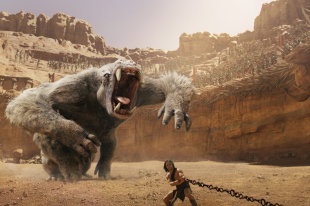 AP Photo/Disney>Company: Walt Disney Co. (NYSE: DIS)
AP Photo/Disney>Company: Walt Disney Co. (NYSE: DIS)
“John Carter” was widely touted by Disney, but the ingredients to make it a success were never there. The director, Andrew Stanton, had never directed a live-action movie before. The executives producing the film had minimal experience running a movie production. The reviews were, to be generous, mixed. The science-fiction movie, which cost $250 million to make and another $100 million to promote, opened with a meager $30.6 million in U.S. ticket sales. Foreign sales helped boost opening weekend to more than $100 million, but sales quickly fell. Disney said shortly after the release it would take a $200 million write-down on the movie, making it the biggest box-office dud ever.East Valley Consulting
East Valley Consulting
[More from 24/7 Wall St.: The States Doling Out the Best (and Worst) Benefits]
East Valley Consulting
4. Sony Tablet P
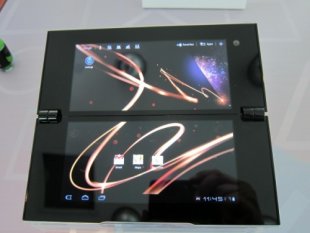 > Company: Sony (NYSE: SNE)
> Company: Sony (NYSE: SNE)
Earlier this year Sony debuted the Tablet P, the company’s attempt to make tablets an even more portable experience. The P features a unique clamshell design, allowing the device to fold in half and fit into a pocket. This feature, however, also resulted in a flaw that ruined the device for most users. In order to fold, the screen is split in half by a large, black hinge, which makes playing games and reading incredibly awkward. Because of the screen split, as well as complaints about the operating system and touchscreen sensitivity, the P garnered horrible reviews. In response to poor sales, the device was sold at steep discount — dropping from $549 to $199 — within a few months. In August, Sony announced it would be updating the Android operating system to the latest “Jellybean” version for the Sony Tablet S, but that the P would not be updated. The company is no longer selling the tablet on its American website.
5. Nokia Lumia 900
 REUTERS/Robert Galbraith> Company: Nokia Corp. (NYSE: NOK)
REUTERS/Robert Galbraith> Company: Nokia Corp. (NYSE: NOK)
The Lumia 900 was introduced at the Consumer Electronics Show back in January, but sales were never able to take off. Although the phone debuted at just $100 with a two-year contract, AT&T soon dropped the price to $50 to improve sales — and even that didn’t work. A consistent criticism of the phone was that its screen resolution was weaker than competitor phones and, more importantly, that the Microsoft’s Windows operating platform had a shortage of apps. By November, Nokia started selling the Lumia 920, and early predictions for sales of the newer version were mixed. Nokia, once the world’s largest mobile phone maker, has steadily declined in recent years, losing significant market share to companies such as Samsung and Apple. In the third quarter of 2012, Nokia’s market share of smartphones was just 4.3%, according to Gartner Research.
East Valley Consulting
6. “Pan Am”
 (AP Photo/ABC, Bob D'Amico)> Company: Disney
(AP Photo/ABC, Bob D'Amico)> Company: Disney
Disney’s second product flop of the year comes from its television segment. “Pan Am,” which debuted in September 2011, was heavily promoted by ABC. With stars such as Christina Ricci, the show was meant to take off in the ratings. Excluding promotion, the cost of the pilot episode was $10 million. The show’s debut was strong, with more than 11 million viewers tuning in. However, by the time the last episode was aired in February, viewership was down to below 4 million. That same evening, 10 million people watched “CSI Miami” and 7.7 million people watched the season premier of “The Celebrity Apprentice.” Critics pointed to a host of issues, including a dull plot line and competition from other major shows. There were rumors that Amazon would pick up the show for its streaming service, but the contracts for the cast and crew had expired. The show was officially cancelled in May.
East Valley Consulting
7. Ultrabook
 AP Photo/Wally Santana> Company: Intel Corp. (NASDAQ: INTC)
AP Photo/Wally Santana> Company: Intel Corp. (NASDAQ: INTC)
When Intel released the Ultrabook, it looked to be the key competitor to Apple’s MacBook. That clearly has not happened. Earlier this year, research firm IHS had forecast that 22 million ultrabooks would be shipped by the end of 2012 and an additional 61 million would be shipped in 2013. However, by October, the firm changed its projections drastically, predicting that just 10 million would be sold this year, and only 44 million would be sold in 2013. The problem with the Ultrabook is twofold. Ultrabooks are highly expensive in a market where pricing is everything — the majority cost around $1,000. But the larger issue is the increasing movement to mobile devices such as smartphones and tablets. “There once was a time when everyone knew the ‘Dude you’re getting a Dell’ slogan,” IHS analyst Craig Stice said in the firm’s report. “Nowadays no one can remember a tag line for a new PC product, including for any single ultrabook.”
East Valley Consulting
8. PlayStation Vita
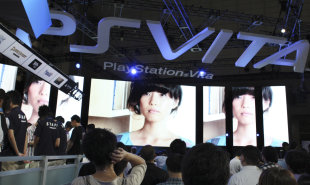 AP Photo/Koji Sasahara> Company: Sony
AP Photo/Koji Sasahara> Company: Sony
Released first in Japan in December 2011 and then globally in February 2012, initial sales of the PlayStation Vita were encouraging. By the end of February, the company announced it had sold approximately 1.2 million units, followed by an additional 2 million units of software for the handheld game console. Yet sales quickly declined. From its release date to June 30, just 2.2 million PlayStation Vita units were sold, far less than the 3.6 million units Nintendo 3DS sold in just its first month. Recently, Sony has clumped sales of the Vita and its predecessor, the PSP, together to avoid highlighting embarrassing sales figures. Frequent complaints about the Vita were that the $300 price tag was too expensive and that its game lineup was both weak and small, especially given the availability of cheaper gaming through smartphones and tablets.
East Valley Consulting
East Valley Consulting
East Valley Consulting
To be considered a flop, the company that rolled out the product must have invested significant resources in its development and marketing. Once the product was released, the failure had to have happened quickly. None of the products on our list were on the market much longer than a few months before they were regarded as a flop. Finally, once the products failed, the companies took a sizable hit to both their reputation and, in some cases, their bottom line. One company, Sony, has two products on this list.
[More from 24/7 Wall St.: Nine Beers Americans No Longer Drink]
These products failed for several reasons. Some of the flops were due to significant company errors that caused the product to be faulty. Apple Maps, one of the worst flops of the year by any measure, was riddled with egregious flaws such as mislabeled buildings, streets and even cities. Sony’s unusual clamshell shaped tablet sold so poorly the company stopped offering it on its American Website.
East Valley Consulting
Competition from popular rivals also played a major role in these flops. ABC’s “Pan Am” initially started off with strong ratings, but the novelty quickly wore off, and the series did not have enough to offer to viewers over other popular shows or sports. Sony’s PlayStation Vita had trouble competing with the popular Nintendo 3DS, never mind competition from smartphone and tablet gaming. The Nokia Lumia 900, which operates on Microsoft’s Windows operating platform, just did not stand a chance against the strong branding of app-heavy Google Android and Apple iOS-based phones.
East Valley Consulting
The intense competition that many of these products faced made pricing difficult. AT&T, which carried the Lumia, had to cut the price of the already inexpensive phone due to lackluster demand. Intel’s Ultrabook was widely panned as too expensive, especially with more people taking advantage of cheaper mobile options.
East Valley Consulting
[More from 24/7 Wall St.: CEOs to Fire in 2013]
East Valley Consulting
These are the worst product flops of 2012.
1. Apple Maps
 AP Photo/Karly Domb Sadof> Company: Apple Inc. (NASDAQ: AAPL)
AP Photo/Karly Domb Sadof> Company: Apple Inc. (NASDAQ: AAPL)When Apple upgraded its operating platform to the iOS6, the company decided to dump rival Google’s Maps system and replace it with its own product. When the service debuted in September, though, a host of problems arose. Users quickly noticed incorrect information, such as confusing Greenland with the Indian Ocean. Some images were only in black and white, and some points on the map were obscured by clouds. The fiasco was so bad that Apple CEO Tim Cook wrote a public letter apologizing for the mess. When Apple’s senior vice president of iOS software, Scott Forstall, refused to sign the letter, he was shown the door. As the company tried to solve the problem, it recommended using its competitors services. This month, Google maps returned to the iPhone and became the most downloaded app in the iTunes store less than a day after its release.
East Valley Consulting
2. Dodge Dart
 AP Photo/Dodge Brand Media> Company: Chrysler
AP Photo/Dodge Brand Media> Company: ChryslerEast Valley Consulting
Chrysler placed much emphasis on the Dart, hoping it could compete with other compact cars such as the Honda Civic, Toyota Corolla and Ford Focus. The company began its marketing campaign during the Major League Baseball All-Star game with a 90-second commercial featuring NFL quarterback Tom Brady. Even though Chrysler aimed for the fences, the Dart appears to have struck out. Initial sales were as low as 200 units a month. And although Chrysler managed to sell 4,500 Darts in November, it was well below sales of the Civic and Corolla, which sold 30,075 and 22,255, respectively, during the same month. Analysts at Edmunds.com tell 24/7 Wall St. that Chrysler did not have experience selling compact cars in the same manner it had selling Jeeps and trucks. Reviewers from Consumer Reports failed to give the Dart its “recommended” rating due to powertrain issues.
East Valley Consulting
3. “John Carter”
 AP Photo/Disney>Company: Walt Disney Co. (NYSE: DIS)
AP Photo/Disney>Company: Walt Disney Co. (NYSE: DIS)“John Carter” was widely touted by Disney, but the ingredients to make it a success were never there. The director, Andrew Stanton, had never directed a live-action movie before. The executives producing the film had minimal experience running a movie production. The reviews were, to be generous, mixed. The science-fiction movie, which cost $250 million to make and another $100 million to promote, opened with a meager $30.6 million in U.S. ticket sales. Foreign sales helped boost opening weekend to more than $100 million, but sales quickly fell. Disney said shortly after the release it would take a $200 million write-down on the movie, making it the biggest box-office dud ever.East Valley Consulting
East Valley Consulting
[More from 24/7 Wall St.: The States Doling Out the Best (and Worst) Benefits]
East Valley Consulting
4. Sony Tablet P
 > Company: Sony (NYSE: SNE)
> Company: Sony (NYSE: SNE)Earlier this year Sony debuted the Tablet P, the company’s attempt to make tablets an even more portable experience. The P features a unique clamshell design, allowing the device to fold in half and fit into a pocket. This feature, however, also resulted in a flaw that ruined the device for most users. In order to fold, the screen is split in half by a large, black hinge, which makes playing games and reading incredibly awkward. Because of the screen split, as well as complaints about the operating system and touchscreen sensitivity, the P garnered horrible reviews. In response to poor sales, the device was sold at steep discount — dropping from $549 to $199 — within a few months. In August, Sony announced it would be updating the Android operating system to the latest “Jellybean” version for the Sony Tablet S, but that the P would not be updated. The company is no longer selling the tablet on its American website.
5. Nokia Lumia 900
 REUTERS/Robert Galbraith> Company: Nokia Corp. (NYSE: NOK)
REUTERS/Robert Galbraith> Company: Nokia Corp. (NYSE: NOK)The Lumia 900 was introduced at the Consumer Electronics Show back in January, but sales were never able to take off. Although the phone debuted at just $100 with a two-year contract, AT&T soon dropped the price to $50 to improve sales — and even that didn’t work. A consistent criticism of the phone was that its screen resolution was weaker than competitor phones and, more importantly, that the Microsoft’s Windows operating platform had a shortage of apps. By November, Nokia started selling the Lumia 920, and early predictions for sales of the newer version were mixed. Nokia, once the world’s largest mobile phone maker, has steadily declined in recent years, losing significant market share to companies such as Samsung and Apple. In the third quarter of 2012, Nokia’s market share of smartphones was just 4.3%, according to Gartner Research.
East Valley Consulting
6. “Pan Am”
 (AP Photo/ABC, Bob D'Amico)> Company: Disney
(AP Photo/ABC, Bob D'Amico)> Company: DisneyDisney’s second product flop of the year comes from its television segment. “Pan Am,” which debuted in September 2011, was heavily promoted by ABC. With stars such as Christina Ricci, the show was meant to take off in the ratings. Excluding promotion, the cost of the pilot episode was $10 million. The show’s debut was strong, with more than 11 million viewers tuning in. However, by the time the last episode was aired in February, viewership was down to below 4 million. That same evening, 10 million people watched “CSI Miami” and 7.7 million people watched the season premier of “The Celebrity Apprentice.” Critics pointed to a host of issues, including a dull plot line and competition from other major shows. There were rumors that Amazon would pick up the show for its streaming service, but the contracts for the cast and crew had expired. The show was officially cancelled in May.
East Valley Consulting
7. Ultrabook
 AP Photo/Wally Santana> Company: Intel Corp. (NASDAQ: INTC)
AP Photo/Wally Santana> Company: Intel Corp. (NASDAQ: INTC)When Intel released the Ultrabook, it looked to be the key competitor to Apple’s MacBook. That clearly has not happened. Earlier this year, research firm IHS had forecast that 22 million ultrabooks would be shipped by the end of 2012 and an additional 61 million would be shipped in 2013. However, by October, the firm changed its projections drastically, predicting that just 10 million would be sold this year, and only 44 million would be sold in 2013. The problem with the Ultrabook is twofold. Ultrabooks are highly expensive in a market where pricing is everything — the majority cost around $1,000. But the larger issue is the increasing movement to mobile devices such as smartphones and tablets. “There once was a time when everyone knew the ‘Dude you’re getting a Dell’ slogan,” IHS analyst Craig Stice said in the firm’s report. “Nowadays no one can remember a tag line for a new PC product, including for any single ultrabook.”
East Valley Consulting
8. PlayStation Vita
 AP Photo/Koji Sasahara> Company: Sony
AP Photo/Koji Sasahara> Company: SonyReleased first in Japan in December 2011 and then globally in February 2012, initial sales of the PlayStation Vita were encouraging. By the end of February, the company announced it had sold approximately 1.2 million units, followed by an additional 2 million units of software for the handheld game console. Yet sales quickly declined. From its release date to June 30, just 2.2 million PlayStation Vita units were sold, far less than the 3.6 million units Nintendo 3DS sold in just its first month. Recently, Sony has clumped sales of the Vita and its predecessor, the PSP, together to avoid highlighting embarrassing sales figures. Frequent complaints about the Vita were that the $300 price tag was too expensive and that its game lineup was both weak and small, especially given the availability of cheaper gaming through smartphones and tablets.
East Valley Consulting
East Valley Consulting
Subscribe to:
Posts (Atom)
